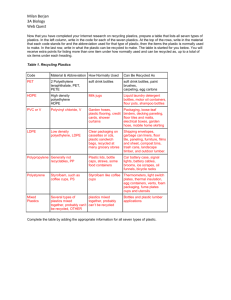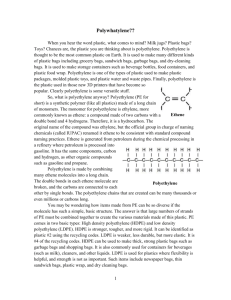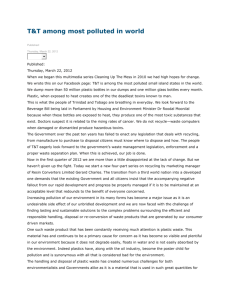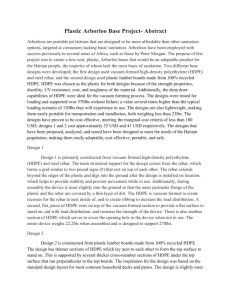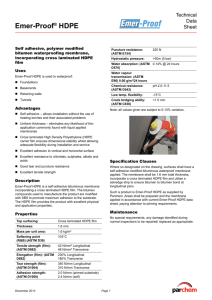HDPE vs LDPE article
advertisement
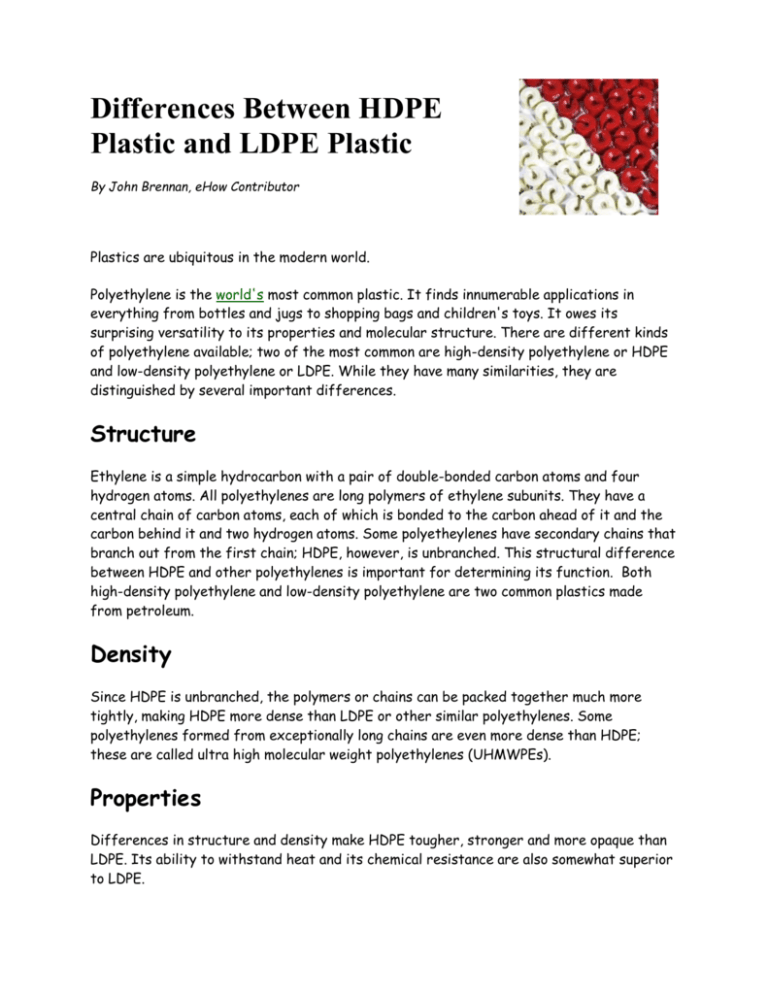
Differences Between HDPE Plastic and LDPE Plastic By John Brennan, eHow Contributor Plastics are ubiquitous in the modern world. Polyethylene is the world's most common plastic. It finds innumerable applications in everything from bottles and jugs to shopping bags and children's toys. It owes its surprising versatility to its properties and molecular structure. There are different kinds of polyethylene available; two of the most common are high-density polyethylene or HDPE and low-density polyethylene or LDPE. While they have many similarities, they are distinguished by several important differences. Structure Ethylene is a simple hydrocarbon with a pair of double-bonded carbon atoms and four hydrogen atoms. All polyethylenes are long polymers of ethylene subunits. They have a central chain of carbon atoms, each of which is bonded to the carbon ahead of it and the carbon behind it and two hydrogen atoms. Some polyetheylenes have secondary chains that branch out from the first chain; HDPE, however, is unbranched. This structural difference between HDPE and other polyethylenes is important for determining its function. Both high-density polyethylene and low-density polyethylene are two common plastics made from petroleum. Density Since HDPE is unbranched, the polymers or chains can be packed together much more tightly, making HDPE more dense than LDPE or other similar polyethylenes. Some polyethylenes formed from exceptionally long chains are even more dense than HDPE; these are called ultra high molecular weight polyethylenes (UHMWPEs). Properties Differences in structure and density make HDPE tougher, stronger and more opaque than LDPE. Its ability to withstand heat and its chemical resistance are also somewhat superior to LDPE. Uses Since it's stronger and more opaque than most other polyethylenes, HDPE is often used for bottles, jugs, trays and containers. LDPE, medium density polyethylene (MDPE) and very low density polyethylene (VLDPE) are more often used for shrink wrap, plastic bags, films, hoses and tubing and other applications. UHMWPE is so strong it's sometimes used for machine parts, edge protection on ice rinks and even artificial joints. Characteristics of LDPE LDPE was the first PE to be developed. It has low-density levels and only a small amount of branching. It is very flexible and easy to clean. It is often used to make plastic film wrap and plastic bags. Additionally, it is used to make plastic items that need to be molded, such as plastic bottles used in labs and some prostheses. Characteristics of HDPE HDPE has higher density levels; it is also characterized by a linear structure consisting of no branching. That makes HDPE stronger and more resistant to chemicals. It is most commonly used for items requiring blow molding techniques, such as toys, automobile parts and bottles. It is also used to create cutting boards since it meets FDA food service standards. Environmental Concerns Although most of these plastics can be recycled, much of it ends up in our trash cans. There are concerns in the environmental industry that, since these plastics do not break down easily in a landfill, there will be many future negative effects due to our overuse of these products. According to the American Chemistry Council's Resin Production and Sales Stats report, released in November 2009, HDPE is the most common plastic and LDPE is the fifth most common plastic produced in the U.S. The slow rate at which plastic degrades vs. the amount produced makes the disposal of it an environmental issue.





